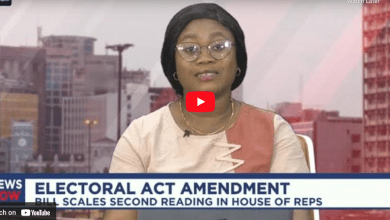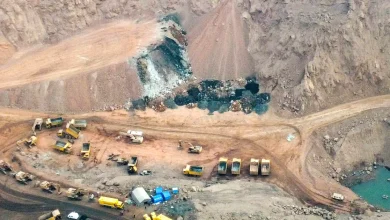Stagflation Fears Resurface Amid Trump’s Tariffs and Inflationary Pressures

Concerns over the return of stagflation are rising as persistent inflation and President Donald Trump’s hardline trade policies create a perfect storm for the U.S. economy.
This dreaded combination of sluggish growth and relentless inflation, which plagued the U.S. in the 1970s, is once again casting a shadow over investor confidence despite a generally positive outlook on Trump’s pro-growth agenda.
While the specter of stagflation has been a periodic fear over the past five decades, it has yet to materialize as a significant threat. But recent developments have put this risk back in the spotlight. “Stagflation is no longer a distant possibility it’s a real concern now,” says Jack McIntyre, portfolio manager at Brandywine Global, citing the combination of soaring inflation and trade policies that could harm consumer demand while limiting the Federal Reserve’s ability to intervene.
Recent data confirmed that inflation remains stubbornly high, with January’s consumer price index showing its sharpest monthly rise since August 2023, pushing the annual inflation rate to 3%. At the same time, the potential impact of Trump’s tariffs on goods from China, Canada, Mexico, and other countries looms large, threatening to stifle U.S. economic growth.
“Tariffs could act like a tax on consumers, slowing the economy and stalling profits,” said Tim Urbanowicz, chief investment strategist at Innovator Capital Management. “But it’s the possibility of stagflation that worries us most right now, as it exacerbates both inflation and weak growth.”
A recent Bank of America survey revealed that investor concerns about stagflation have surged, with a significant rise in the number of fund managers bracing for a scenario where the economy grows below trend while inflation remains high. Yet, even with the threat of stagflation, investors are still holding a bullish view on stocks, with many seeing a trade war as a low-probability risk.
Trump has already rolled out tariffs on Chinese imports and global steel and aluminum, and he’s tasked his economic team with crafting plans to implement reciprocal tariffs on any nation imposing taxes on U.S. imports.
Despite some forecasts predicting that tariffs could fuel long-term growth by reducing global competition, their initial impact could fuel inflationary pressures.
Still, not all experts believe stagflation is inevitable. Core inflation, currently hovering around 3%, remains far below the 7% average of the 1970s. And while inflation expectations seem stable for now, Evercore ISI suggests that there is less fear of wild fluctuations in the long-term inflation picture.
However, Mark Zandi, chief economist at Moody’s Analytics, cautions that the risk of stagflation may be underestimated.
He warned that Trump’s policies, including large-scale deportations and the aggressive tariff agenda could have negative supply-side effects, similar to the oil price shocks that contributed to 1970s stagflation.
For now, investors are taking a wait-and-see approach. Some are buying 10-year Treasuries, which would benefit from low-growth conditions, while others are hedging their bets with gold—a traditional safe haven during stagflationary times. As the market continues to wrestle with the potential impact of Trump’s policies, it’s clear that the looming threat of stagflation will remain a key focus for investors in the months ahead.





